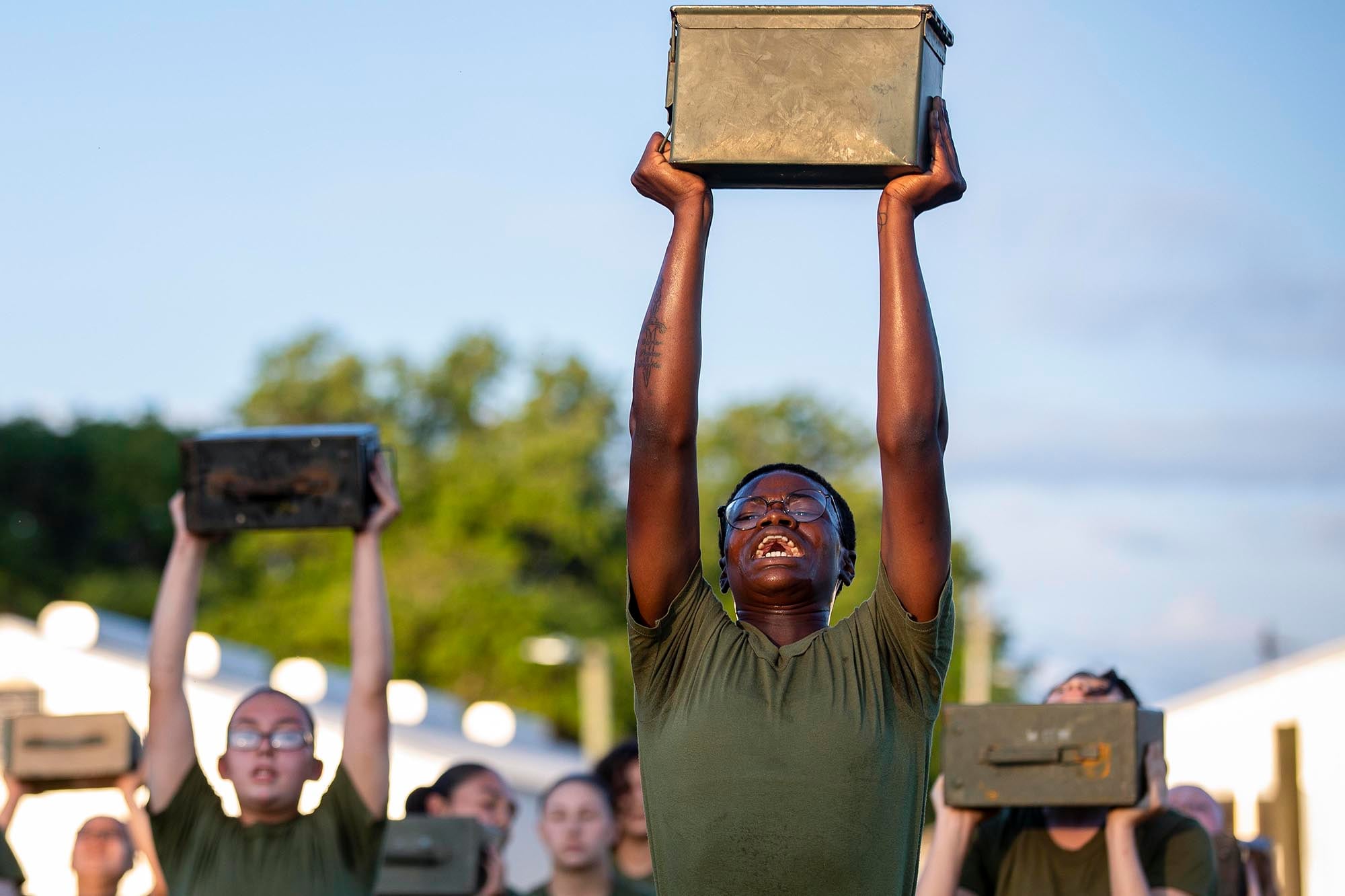The Marine Corps announced in late August that it will update the way it measures body composition of its troops in an effort to be more accurate, especially with gender-specific differences.
The service is using new data to revise its standards following the conclusion of a yearlong study on body composition by the Marine Corps’ Training and Education Command and the Army’s Research Institute of Environmental Medicine, considered “one of the most technologically advanced studies on the topic since the 1980s.”
“This study marks a milestone in understanding the health and performance of our Marines,” said Commandant of the Marine Corps Gen. David Berger in a press release. “Our primary focus in the Marine Corps is the individual Marine and this study is a pivot point. We will continue to learn and explore additional modifications to our body composition program.”
The body fat percentage of Marines previously was measured using a tape test ― a method that measures a service member’s neck, waist and other body parts against their height.
Approximately “0.6% of male and 6.3% of female Marines” were incorrectly measured under the tape test model as exceeding the service’s body fat standards, according to the service statement.
Now, following the study that evaluated more than 2,000 Marines across three bases, troops will not be formally assigned to the service’s body composition program, which helps troops manage their weight or separates them for not meeting standards, until their body composition is also calculated using X-ray scanners and other tech.
RELATED

The policy is planned to go into effect on the first day of January 2023.
“Ultimately, this is about warfighting,” said Berger who also posted about the change on social media. “We need to find the most practical, accurate, and unbiased method of measuring body composition to maintain a healthy, ready force.”
Lt. Gen. Kevin Iiams, commanding general of the Marine Corps’ Training and Education Command, said in a statement, “Our research demonstrated the taping method is still a viable solution to determine if a Marine is within an optimal body composition range. However, we recognize that a more scientifically advanced method of determining body composition is required before a Marine is assigned to a program that could have career implications.”
Also in the updated policy, female Marines will be given a 1% increase in total allowable body fat.
The Marine Corps is not the only service looking to update its use of the tape test for a more accurate assessment, Military.com reported, and more Marine changes may be coming.
“These are likely not the last changes to come for the body composition program,” said Iiams. “We are a learning organization and will continue to refine these important health and readiness-programs as we collect more data.”
Jonathan is a staff writer and editor of the Early Bird Brief newsletter for Military Times. Follow him on Twitter @lehrfeld_media




